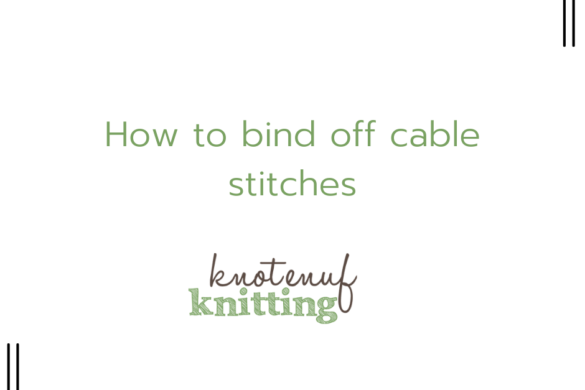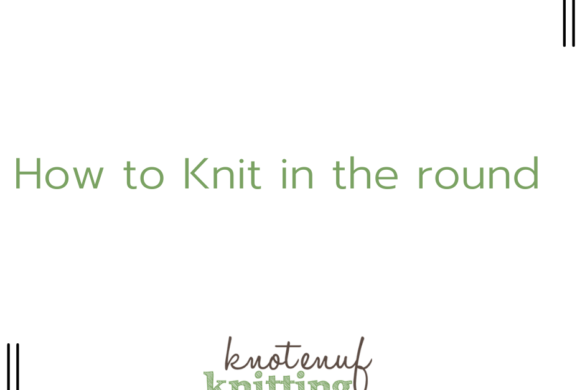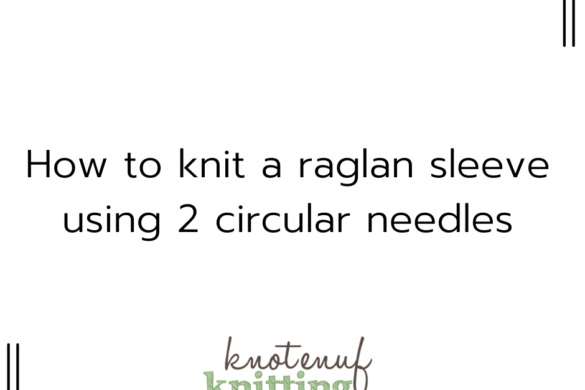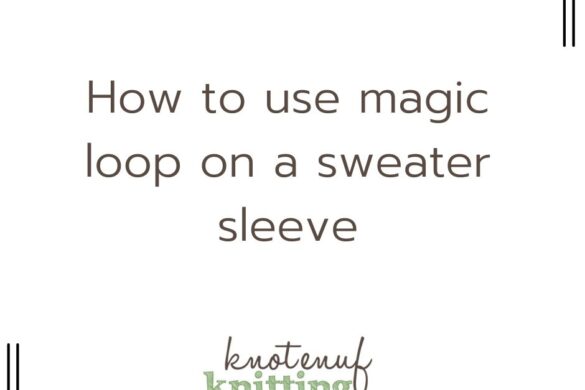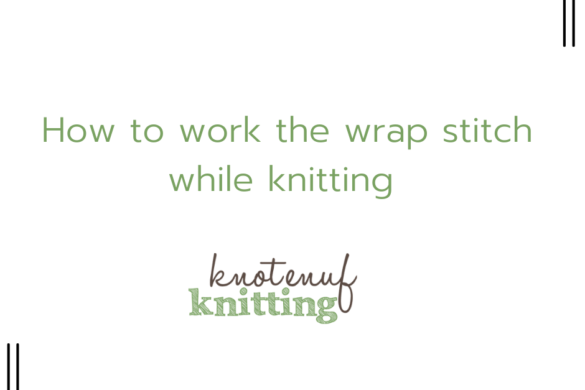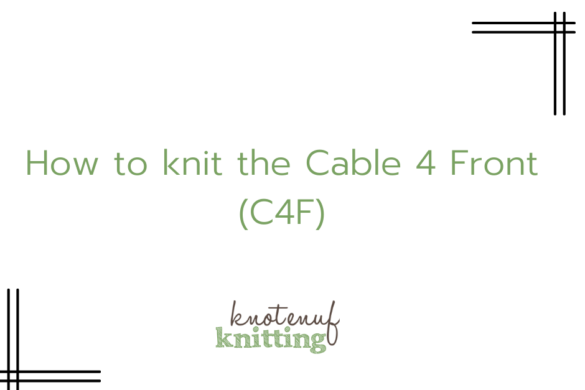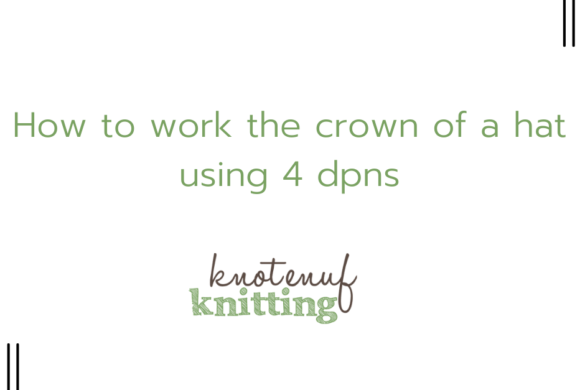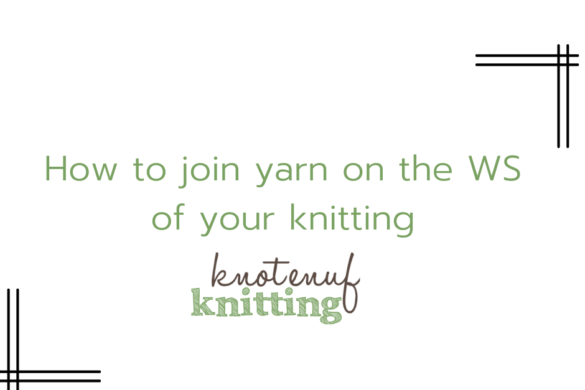Gauge is the stitch and row count in 1″ (2.5 cm) square bit of knit fabric. Usually, gauge is measured in 4″ x 4″ (10 cm x 10 cm) to make it easier to calculate.
How do you measure gauge?
Using the stitch pattern that the knitting pattern designer states, you will knit a swatch of the pattern. This will be a rectangle piece that you can use to measure the amount of stitches and rows you have per inch. After you have knit the swatch, you can count the stitches using a ruler. It is best to count the stitches over 4″ (10 cm). If you have too many stitches, you will need to try larger needles. If you have too few stitches, you will need to try smaller needles.
You also measure the amount of rows / 4″ (10 cm) in the same manner. After you have knit the swatch, you will count the number of rows / inch. If you have too few rows, you will need to use smaller needles. If you have too many rows, you will need to try larger needles.
Why do you want to measure gauge?
Every designer designs their patterns with a specific gauge. This accounts for the amount of stitches and number of rows required to knit the correct dimensions. If you are off a little bit in the gauge, it can make the finished product too large or too small. This can be a great disappointment when one takes so much time and effort to knit.
For example, if you are knitting a sweater and the gauge is 18 stitches / 4″ and you have 20 stitches / 4″, your finished garment will be too small. If the finished circumference is supposed to be 20″, your sweater will be 18″ around. In this case, having 20 stitches in 4″ instead of 18, makes your sweater 2″ too small. It makes a difference. In a sweater, if the row gauge is out, it will result in the yoke of your sweater being too short or too long. Sometimes, you can adjust for this, but you have to know how.
Does gauge always matter?
It depends on what you are knitting. Hats, sweaters, socks, and pretty much any other item you wear, gauge is very important. The designer uses the gauge to design each portion of the garment.
Blankets can be more forgiving if you don’t mind having a smaller or larger blanket. But, if you are not going to be happy with the result, it is always important to check the gauge first. That way, you will always be happy with the item you have knit.
Why is my gauge different from the designers?
Everyone knits differently with different tension. Some are tight knitters and some are loose knitters. Often, the designer uses the average gauge to design for the specific yarn. After you have knit for some time, you will realize where you fit against the average knitter. You may have to choose a larger needle to get gauge if you are a tight knitter. If you are a loose knitter, you will have to choose a smaller needle to get the right gauge. How much larger or smaller varies with each person. The more you practice your gauge, the more you will realize where you are on the knitting spectrum.
What stitch pattern is chosen to calculate the gauge?
This also depends on the individual pattern. Sometimes, when there is a specific stitch pattern used throughout the pattern, the designer will use it for calculating the gauge. Often, when I am designing a pattern with many different designs, I will use the basic gauge pattern of stockinette stitch. This is usually a good indication for how a knitter knits. If you get the right stockinette gauge, it transfers to the rest of the stitch patterns.
Example:
I have knit to different gauge swatches. The pattern is 18 stitches / 26 rows = 4″ x 4″ (10 cm x 10 cm). I used two different needles to get two totally different results. You can see how this would make a huge difference on the pattern I would be knitting.
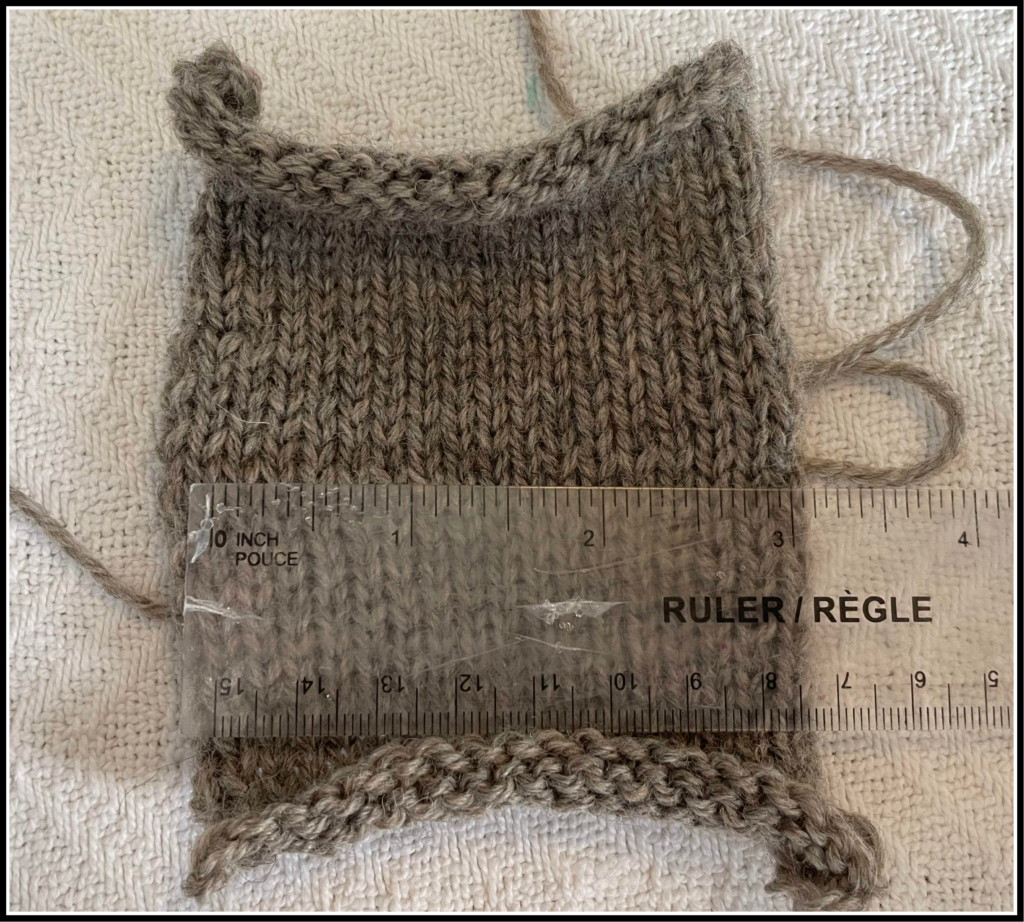
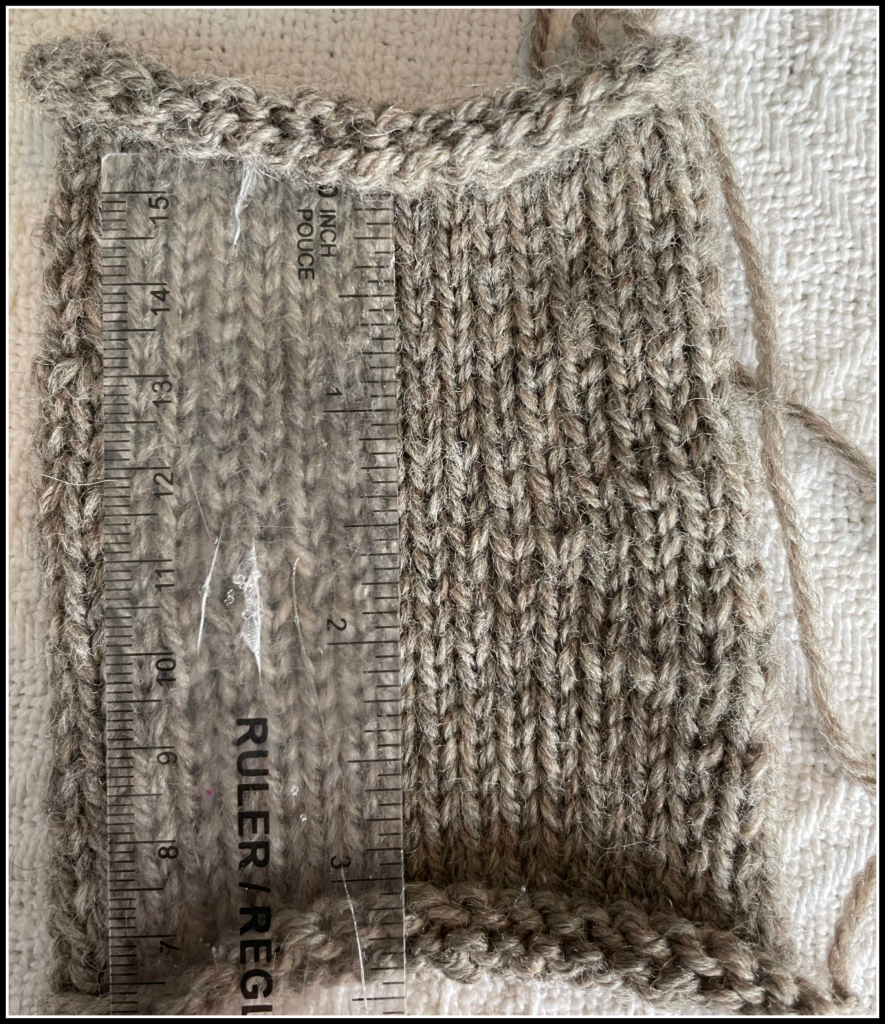
In the above pictures, I used US 4 (3.5 mm) needles. The gauge I got on this swatch was 17 stitches / 3″ (7.5 cm). That is an inch below the given gauge of 4″ (10 cm) per 18 stitches. My row gauge was 25 rows / 3″ (10 cm). Once again, it is almost 1″ below the required row gauge.
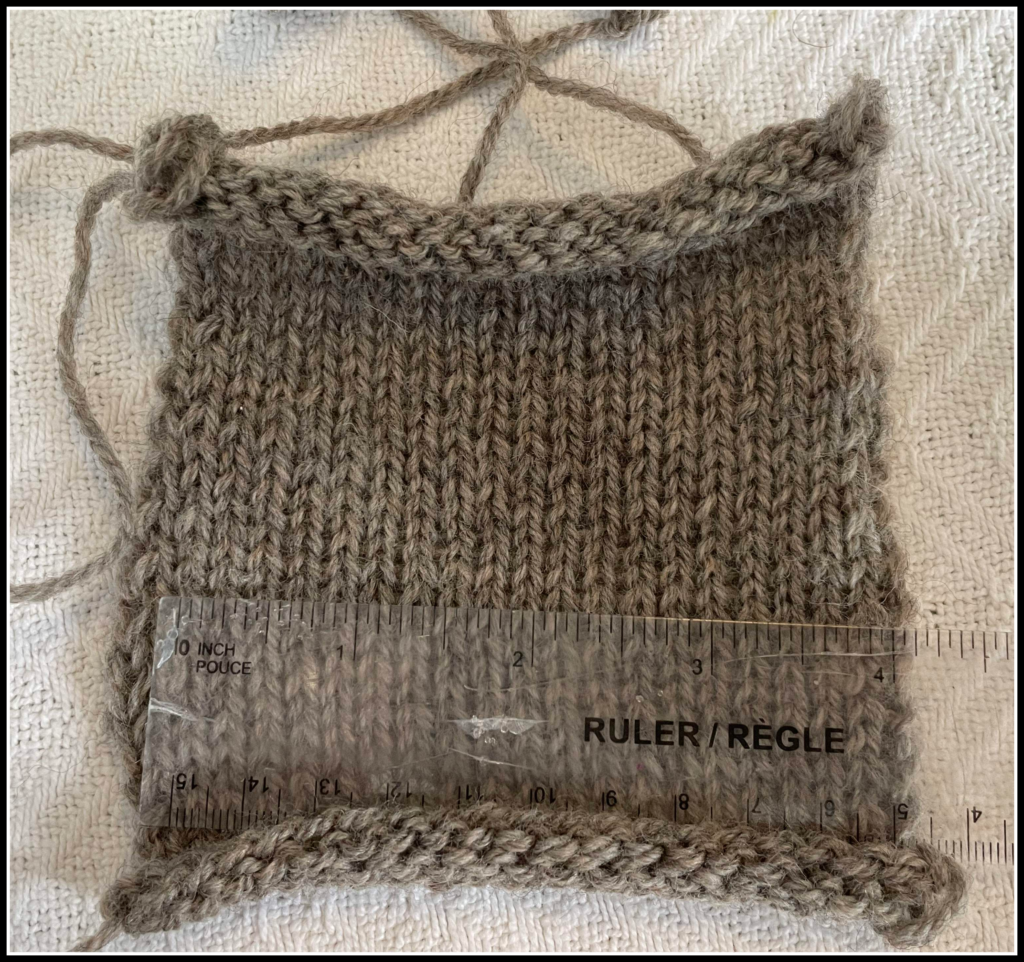

In these next pictures, I used US 8 (5 mm) needles. I got the correct gauge of 18 stitches / 26 = 4″ x 4″ (10 cm x 10 cm). These would be the needles I would use to knit this knitting project.
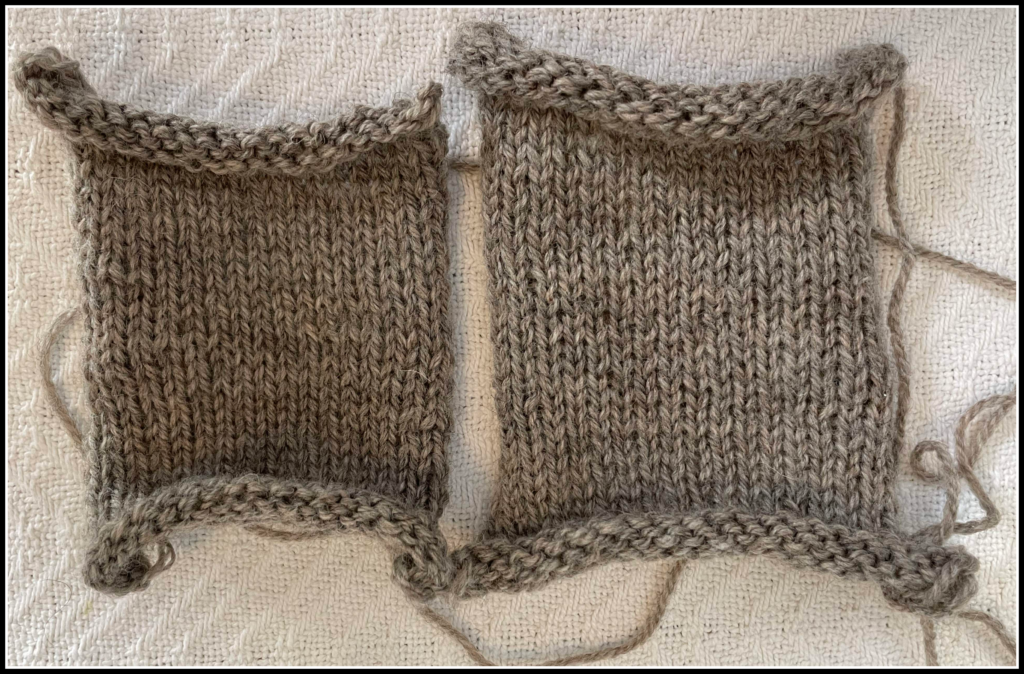
The above picture shows the two knitting swatches side by side. There is a huge difference in their size. If you knit two sweaters using those two different needle sizes, the end result would be two completely different size sweaters. Thus, Gauge is very important!

